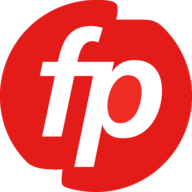
Case study • bp
Mark Smith interview – A lean category management model is at the heart of procurement at bp
By Future Purchasing |
A core tenet of the 2021 Global Category Management study is to provide organisations with the business case for securing, and the practical guidance needed to embed, good category management practices.
Category management, done well, provides purchasers in any industry with a strategy and business process to help achieve long-term business goals and contribute to overall business performance.
There are many reasons why procurement leads are making category management a strategic priority, and in order to understand the many facets that inform their decision we have been talking with various heads of procurement who are successfully employing a category management approach.

Mark Smith is Procurement Vice President, Digital & Talent Supply at bp plc., a multinational oil and gas company headquartered in London and one of the world’s seven oil and gas “supermajors,” now on a mission to drive the transition to lower carbon sources. Mark has also been responsible for strategy and transformation for all corporate-wide procurement activities across BP, and as such has discovered extensively how category management can play a large role in helping an organisation reach its performance goals.
Contextualising category management
At bp Mark places a high emphasis on category management. “Though it isn’t always known by that name, it’s what sits at the heart of what we do,” he says.
Why category management holds such a high status at BP Procurement is tied up with the company’s ambition for #bpNetZero and its target of 50GW of renewable energy production before 2030, which undoubtedly will include off-shore wind, solar energy, hydrogen projects and initiatives for sustainable transport systems.
“We absolutely consider category management as a key priority,” he says, “because in response to market dynamics today, the agenda of our function is shifting, and it’s imperative that we support that by paying close attention to how we are managing our relationships with suppliers and the supply base, and we do that through category management.”
“Traditionally procurement has placed most emphasis on the process compliance and volume leverage aspects of its mandate for go-to-market activity,” he believes. “Negotiation and price savings have dominated. But I do believe we’ve all been on a journey to change that perception of the function, and we all feel a greater responsibility to use the demands we make on the supply chain to further the goals of our organisations — and more and more these go broader than just bottom-line profit.”
bp is concentrating on four main initiatives that go way beyond procurement’s historical remit where category management will have a critical role.
1
Profitability
“Basically, you’ve got to have the underlying execution infrastructure working for you, whether that be through your catalogues or your channels. Cost is driven by a factor of price, but more materially, the volume of units demanded, their spec and so on all influence the price you pay and the cost you spend. You need to look at the dynamics around constrained markets, inflation, opportunities to respecify, how you get the best value for your spend from total cost as opposed to unit price — these are some of the levers category management allows you to pull if you have the right channels set up to execute and provide you with the appropriate data upon which to act.”
2
Relationships/collaboration
“We are engaged in more conversations than ever about business change. Our supply network is now multimodal as opposed to bipolar; the linear relationship between customers and suppliers is changing; our suppliers are becoming our customers, our competitors, our partners, and so on. How you look at that holistically in a business that is doubling its customer touch points, and how you use your existing relationships to understand where those partnerships can go deeper to create new business opportunities and revenue streams, is another avenue that category management opens up. It helps us understand what the future will look like.”
3
ESG
“ESG is growing in significance, not just for people and the planet, but in the investment climate too where it will be as important from an investor performance perspective as your traditional bottom line. The supply chain plays a huge role in that through your carbon emissions and the impact you have on the planet and through the opportunities you have to influence these with your supply decisions. You have to think strategically about how you engage your supply base, and again that’s a lever of category management.”
4
Innovation
“Innovation is critical in this rapidly changing world. No one company has the monopoly on ideas, so how you go about getting those ideas that will give you a competitive differentiator, whether through tech, customer experience or the many opportunities in the innovation space, is another reason to harness category management to your advantage.”
“For me, category management is how you bring these four organisational impacts together. It drives how you think about the needs of the organisation and the market as it exists. It helps you purposefully place that spend under your control to generate those outcomes in equal measure, rather than just addressing it reactively.”
Category structure for the holistic picture
bp has created a dedicated sustainable procurement organisation that works specifically with the categories on some of the things that will generate equity, grow spend with diverse suppliers and bring diverse talent into the supply chain. Mark’s role is in the indirect portfolio, so anything related to digital spend, and labour-based services, plus anything that makes that productive, is under his control.
“We’ve moved to a much leaner category model,” he says, “and although it sounds counter-intuitive, we have put category management at the heart of what we do by shrinking the categories themselves and growing our agile teams who look at how we commercially transform the supply base, how we create value for the organisation and how we create the big-ticket transformational change agendas.”
“One of the blockers to genuine category management,” he finds, “is putting people in category silos who only have the resource to look at their own four walls — that can constrain capability and thinking as often categories of different values, maturities and opportunities are given proportionally the same level of resource and attention.” So Mark tries to resource accordingly, and baseload in groups of alike category. He then has a separate team which he uses in an agile way to support their strategies. “Because we are all working to the same organisational goals,” he says.
“We have three teams. One focuses on transformation, in effect they are the ‘elite squad’ for category management and category strategy. They are well practiced in using the various category management techniques to create really compelling transformational strategies and execute them, because they are doing this with everyday frequency rather than once every 3-5 years.”
“We then have a team we call ‘procurement innovation’ and their role is rapid collaboration – we’ve created a methodology to bring together stakeholders and suppliers to solve specific business problems that generally ends in a supply decision.”
“And we have third team called ‘supply innovation.’ I think category teams are too easily consumed by the day-to-day – the stakeholder who shouts loudest or the strategy they are trying to implement — to spend time purposefully and somewhat speculatively in the market, for example to understand what a good technology roadmap looks like. I think theoretically this has always been a key component of category management, but in my experience it’s the thing that drops to the bottom of the list when time and resource is limited.”
“So what we are trying to do is create specific teams that are talking to the big existing suppliers, about what they offer or the parts of their portfolios that we don’t currently use but should do, and newer suppliers or sources of tech that we should be brining into the organisation.”
“What these teams are doing is part of the standard category management toolkit, but we are trying to give it its own real dedicated focus to make sure that happens on a regular basis.”
This is innovative in itself, separating out the strategy from the implementation, rather than bundling it together, which is often the result of resource constraints. Basically what Mark has done is put the bigger proportion of resource in the three agile teams. It was a conscious decision to emphasise the strategic category focus by placing it in these fluid teams separate from the category families, so it doesn’t compete for time with all the BAU distractions — testimony to the importance they place on that.
As part of their day job category managers perform the core elements of category management for major category families, working with the agile teams to build multi-year pipelines of transformation activity.
Having a three-team approach does require a governance model. Mark created a collegiate team across those areas and removed what he calls “the systematic disincentives of playing for the house.” No-one stands alone, and everyone has a stake in each other’s success, because “you can’t hit your own numbers to the exclusion of everyone else,” he says. “All targets are at leadership team level and we’re all accountable for them.”
To achieve this, he says, “you are effectively disrupting what the organisation has grown up comfortably doing. In reality you are asking people to be the architects of supply solutions and move out of the space of their own category, the negotiations and the savings, towards the go-to market activity.”
Three success factors for innovative category management
In Mark’s experience, category management has lots of potential, but it has traditionally been executed largely as a strategic sourcing process. “There is nothing to stop anyone adopting it,” he says, “but to be successful you need to do three things:
1
You have to be very disciplined about your channel strategies and how you transact in them. If that is not well controlled or if your channels are set up effectively to drive a lot of sourcing activity to show you are impacting the bottom line, then you will not find the time to make a lean model work. You need longer-term agreements and a wider scope so you have more of the spend within each contractual solution. This is really important because you cannot have lean category families if there is still a high degree of operational work. This has been, and continues to be, a journey for us.
2
You have to help people understand what the future looks like. In the category role of the future you will need to be looking at how you create sources of value, almost like a commercial strategist. You will watch how your category is transacted, you will be watching the markets, working with relevant teams, and you will be playing a role that is much more strategic-category oriented. The challenge, in today’s environment, where much of a person’s identity is tied up in sourcing (in their negotiation skills and implementation of deals) is opening people’s eyes to the fact that they can have a much bigger role if they are monitoring where the spend is going, or which parts of spend can be dispensed with or rechannelled to alternative suppliers, and on the basis of that they can have better revenue conversations. Of course you have to be sensitive about how you take people on that journey and reassure them that you are not taking away their value, but enhancing it — and that’s what cultural change is all about.
3
You have to reprioritise and be flexible. There is often an underlying level of discomfort when you move people away from a world where they own their category family (sourcing, strategy, negotiation and implementation are individually owned) into a world where we all collectively own the targets because there are no category-level targets anymore. We work closely in our leadership team to prioritise and reprioritise, to set goals for the function. It can feel a lot more like a professional services environment than a traditional discrete portfolio that you own, but it’s essential to have a wider view. It’s a big change for people who are used to structuring and planning their time – you have to be more flexible. Procurement needs agility like it’s never done before.”
Working with stakeholders for better outcomes
Mark’s long-term and deeply held belief in how they are operating is being met with approval from stakeholders, and he is delighted that they are starting to see procurement no longer as the ‘blocker’ that slows down the buying process for the sake of a saving that might make up just a small slice of the stakeholder’s value proposition.
“They see us more as the people who can actually work with them on what really matters to them,” he says. “Savings of course are important to people under budget pressures, and that must be serviced, but seeing the bigger picture and offering the kind of strategic thinking they want from someone in a commercial role is definitely more valuable. It has helped us get good business outcomes with suppliers too.”
A new procurement world
This way of working is not for everyone, especially for those who like to be in complete control of a rigidly defined portfolio. But Mark confirms that category management will always have a place for everyone. “In the long run, we are building a new procurement function on the basis of the digital tools available and new sources of supply, but that doesn’t mean there isn’t space for anyone who wants to continue building their career in the more traditional sense. But the future will look very different and procurement will be attracting more diverse talent.”

And in that new procurement world, performance measurement will have to look very different too. “You have to be more holistic about how you do that,” he says, “as well as measuring the likes of cost value and revenue generation, you must think about measures for ESG goals, aims, timeframes, provenance, net zero, etc., because that time has come. The business will want to see the whole value chain and where cost was added and at which part. So that’s another very different mindset from what we are used to in procurement. So we run a six-weekly showcase of achievement which deliberately does not highlight savings — that way doing transformative work gets rewarded and recognised.”
“However, we must be mindful that we are making some fundamental changes to our business. It’s a big shift from what was a stable business model, with linear supply chains. But that time has changed, and we have to change with it. There’s now a need for different suppliers, a need to operate in different markets and geographies and businesses. Everything has become much more customer-focused, and in that, both organisational change and procurement change are symbiotic.”
Basically, this change has been coming for years. If your organisation wants to keep up with the modern challenges and changes, then it needs a supply organisation that can help it do that. “We’ve had a big reset moment,” says Mark. “We had built an engine that takes what the business wants, stops it, and gives back something a bit cheaper – now we are listening and providing options the business can use. So a category management approach, that is agile, thinks holistically, has clear business aims and is structured to deliver wider organisational value, is the right path to deliver that.”
Related Expertise
Supplier management
Our supplier management approach combines excellent tools and techniques across the full range of activity, from segmentation, through performance measurement and improvement and through to relationship strategy development.
Category management
Excellence in Category Management gives multipliers of value delivery compared to less effective programs. Our approach, delivers a high performing team and process which provides sustainable value over years rather than months.

Future Purchasing
If you want to get more value out of your procurement spend, or you just want to know more about us, request a callback above or send us an email and we will come straight back to you.




